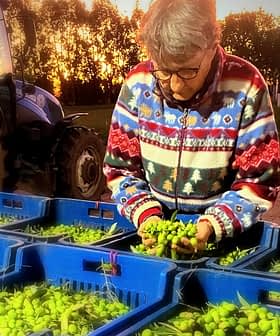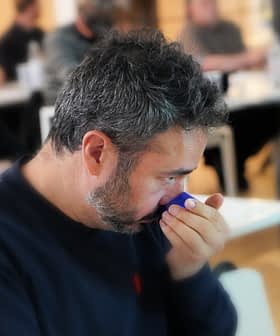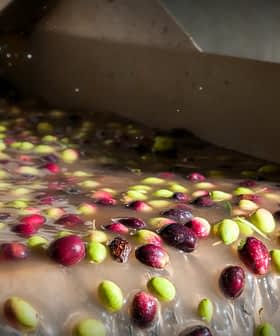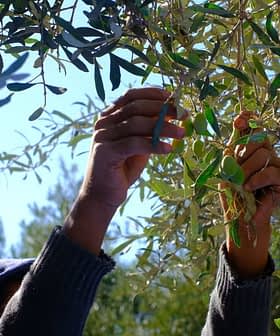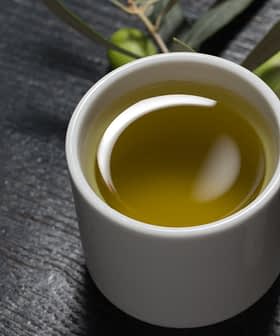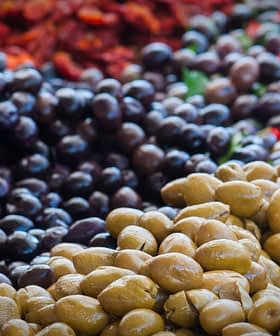Oleum Develops New Tools for Extra Virgin Olive Oil Analysis, Authentication
The Oleum Project has developed innovative tools for analyzing and authenticating extra virgin olive oil, with the goal of setting new standards in combating fraud and assessing quality. The project coordinators have already reported their findings to the International Olive Council and are discussing potential impacts on certification and product assessment, including a chromatographic method to identify volatile compounds in olive oil samples.
The Oleum Project has developed a new set of tools for the analysis and the authentication of extra virgin olive oil.
Experts from the European Union-funded organization told Olive Oil Times they expect the project to set new standards in combating olive oil fraud and assessing quality, among other goals.
This is an adequate platform to be implemented alongside the sensory panel in olive oil classification operations.
According to the project coordinators, the group has already reported their findings to the International Olive Council and is discussing their potential impacts on extra virgin olive oil certification and product assessment.
“Oleum has developed innovative solutions and perfected existing techniques to verify better that the quality of the olive oil is consistent with what is declared by the producers, thus unmasking illegal blends and other fraudulent practices,” said Tullia Gallina Toschi, a professor of food science and technology at the University of Bologna and coordinator of the research group. “[The project is] also providing innovative tools for the verification of geographical origin.”
See Also:Even Dark Glass Bottles Leave extra virgin olive oil Susceptible to Oxidation, Study FindsAmong the most promising techniques was a chromatographic method, which identifies volatile compounds in the upper portion of an olive oil sample.
The method returns a statistical value based on the volatile compounds and determines whether the olive oil meets the standards set for extra virgin, virgin or lampante.
The detection identifies the volatile compounds and determines their mass. It requires no special high-resolution technologies, which means it has a low cost and is a promising option for widespread adoption among olive oil companies.
“This method returns a specific heat map that in the future we could develop as an image,” Gallina Toschi told Olive Oil Times. “It is a bi-dimensional profile that represents the complexity of the volatile compounds in the sample. The elaboration of those maps can lead to olive oil classification in the three different categories.”
Along with accurately determining olive oil quality, Gallina Toschi believes that the tools being developed by the Oleum Project could also help producers consistently create a uniform blend of different olive oils.
“When we blend olive oil, we smell and evaluate the bouquet of the volatile compounds,” she said. “An analysis of the volatile fraction or its screening may provide an unambiguous characterization of a specific product.”
“With dedicated tools, the producer could choose to produce a blended extra virgin olive oil with specific characteristics while also being able to replicate it over time,” Gallina Toschi added.
Beyond helping producers, Gallina Toschi said that the new tools might also impact extra virgin olive oil shipping and the products’ shelf-life.
If an olive oil arrives at its destination and no longer meets the standards of “extra virgin,” Gallina Toschi said the technology could be used to determine what went wrong during the shipping process.
“Through the analysis of the volatile fraction of the product, it is possible to understand what has gone wrong, what specifically has caused the defect,” she said. “By comparing the samples before and after shipping, we could end up with a tool to guarantee the quality of the product when it arrives at the supermarket, and a tool to track it over time.”
See Also:Quality Controls in Europe Need Improvement, Study FindsAccording to Assitol, the Italian association of olive oil producers, the Oleum Project’s tools to analyze the volatile compounds have already shown excellent results. The association and its industrial partners formed a dedicated task force to test the efficiency of the detectors.
“We tried to apply this tool to the daily activity of the sector and now we have no doubts: at the moment, this is an adequate platform to be implemented alongside the sensory panel in olive oil classification operations,” said Anna Cane, the president of Assitol. “We must now accelerate the process to have that method validated and approved.”
“This tool has shown to be very useful because it is capable of identifying hundreds of molecules responsible for the sensorial profile of the olive oil,” she added. “The sensory panel remains essential, but with this new ally, it can become even stronger and more efficient for extra virgin olive oil quality control.”
Another of the four-year project’s main achievements is the Oleum Databank, which includes the research findings on Oleum-validated methods and serves as a reliable reference for the olive oil sector stakeholders and general public.
Oleum Project scientists told a recent conference that the need for new methods to identify fraud while promoting quality and extra virgin olive oil authenticity is growing within the European Union.
E.U. members account for 70 percent of worldwide olive oil production, but extra‑E.U. competition is growing, a scenario that makes assessing quality and certifying extra virgin olive oil products crucial to all involved parties and consumers.
“The high price of olive oil, its distinctive sensory profile and reputation as a healthy source of dietary fats make it a target for adulteration, illegal blending with other vegetable oils or deliberate mislabelling of less expensive classes of olive oil,” the researchers at the Oleum Project said. “As a result, olive oil adulteration for financial gain has become one of the biggest sources of agricultural fraud in the E.U.”
“We expect that the new methods will impact the quality control techniques in the next 10 to 15 years,” Gallina Toschi said. “We expect a global impact in a few years. The whole industry is looking to the E.U. Oleum Project.”


